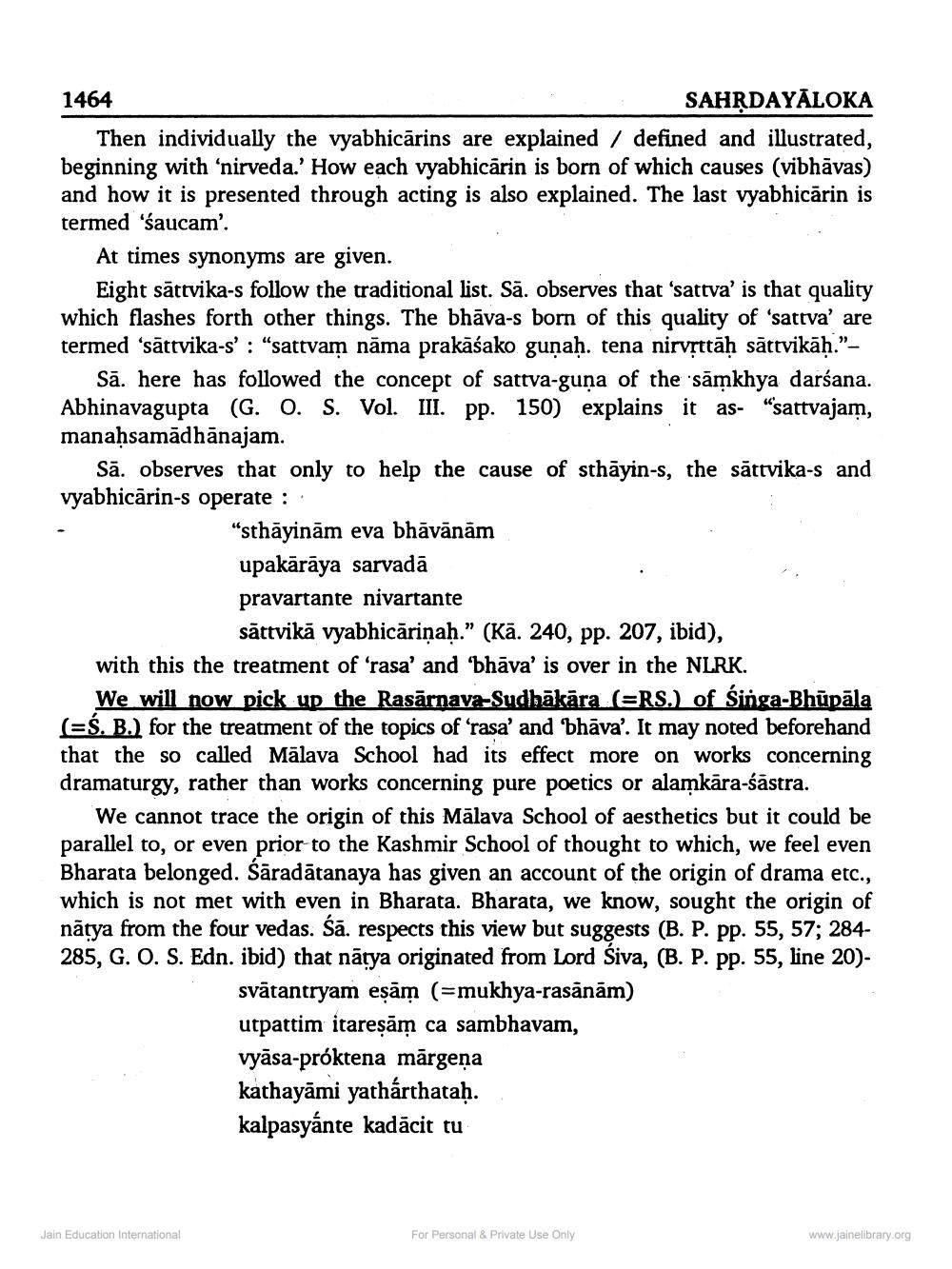________________
1464
SAHṚDAYĀLOKA
Then individually the vyabhicārins are explained / defined and illustrated, beginning with 'nirveda.' How each vyabhicārin is born of which causes (vibhāvas) and how it is presented through acting is also explained. The last vyabhicārin is termed 'saucam'.
At times synonyms are given.
Eight sättvika-s follow the traditional list. Sā. observes that 'sattva' is that quality which flashes forth other things. The bhāva-s born of this quality of 'sattva' are termed 'sattvika-s': "sattvam nāma prakāśako guṇaḥ. tena nirvṛttāḥ sättvikāḥ."
Sā. here has followed the concept of sattva-guna of the samkhya darśana. Abhinavagupta (G. O. S. Vol. III. pp. 150) explains it as- "sattvajam, manaḥsamādhānajam.
Sā. observes that only to help the cause of sthāyin-s, the sattvika-s and vyabhicārin-s operate :
"sthāyinām eva bhāvānām upakārāya sarvadā
pravartante nivartante
sättvikā vyabhicāriṇaḥ." (Kā. 240, pp. 207, ibid),
with this the treatment of 'rasa' and 'bhāva' is over in the NLRK.
We will now pick up the Rasārṇava-Sudhākāra (=RS.) of Śinga-Bhūpāla (=Ś. B.) for the treatment of the topics of 'rasa' and 'bhava'. It may noted beforehand that the so called Mälava School had its effect more on works concerning dramaturgy, rather than works concerning pure poetics or alamkāra-śāstra.
We cannot trace the origin of this Mālava School of aesthetics but it could be parallel to, or even prior to the Kashmir School of thought to which, we feel even Bharata belonged. Sāradātanaya has given an account of the origin of drama etc., which is not met with even in Bharata. Bharata, we know, sought the origin of natya from the four vedas. Šā. respects this view but suggests (B. P. pp. 55, 57; 284285, G. O. S. Edn. ibid) that natya originated from Lord Siva, (B. P. pp. 55, line 20)svātantryam eṣām (=mukhya-rasānām)
Jain Education International
utpattim itareṣām ca sambhavam,
vyāsa-próktena mārgeṇa kathayāmi yatharthataḥ. kalpasyante kadācit tu
For Personal & Private Use Only
www.jainelibrary.org




